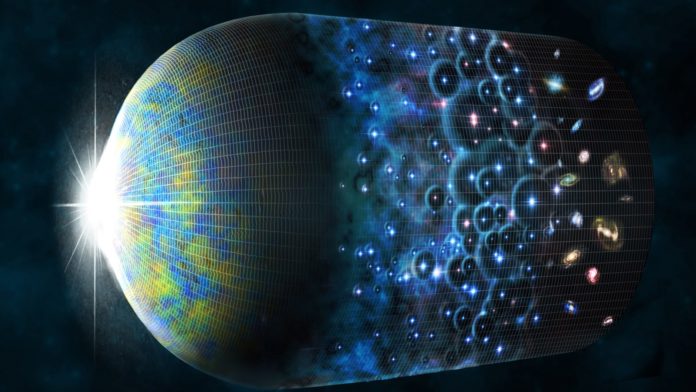The nature of dark matter is one of the biggest mysteries in science and we need to use any related new data to tackle it. In a new study, astronomers at the Harvard Gazette are proposing a new model for the invisible material that makes up most of the universe. They think that dark matter particles may have a tiny electrical charge.
Astronomers explored the possibility that charged dark matter issue particles associated with the normal matter by electromagnetic force.
The story starts with the stars that generate ultraviolet light. As indicated by the general scenario, this UV light interfaced with cold hydrogen atoms in gas amongst stars and empowered the atoms to absorb the cosmic microwave foundation (CMB) radiation left over from the Big Bang. This absorption should have led to a drop in intensity of the CMB during this period, less than 200 million years after the Big Bang.
Their work dovetails with a recently announced result from the Experiment to Detect the Global EoR (Epoch of Reionization) Signature collaboration, known as EDGES. Astronomers even reported that they had detected the radio signature, and conceivable confirmation for the association between dark matter and normal matter, from the origination of stars.
Avi Loeb of the Harvard-Smithsonian Center for Astrophysics (CfA) said, “We’re able to tell a fundamental physics story with our research no matter how you interpret the EDGES result. The nature of dark matter is one of the biggest mysteries in science and we need to use any related new data to tackle it.”
Julian Munoz, a postdoctoral fellow in the Department of Physics who led a new study, explained, “At the time when CMB radiation was being absorbed, any free electrons or protons associated with ordinary matter would have been moving at their slowest possible speeds (since they were heated later on by X-rays from the first black holes). Scattering charged particles is most effective at low speeds.”
“Therefore, any interactions between normal matter and dark matter during this time would have been the strongest if some dark matter particles are charged. This interaction would cause the hydrogen gas to cool because the dark matter was cold, potentially leaving an observational signature such as that claimed by the EDGES project.”
Loeb said, “We are constraining the possibility that dark matter particles carry a tiny electrical charge — equal to one-millionth that of an electron — through measurable signals from the cosmic dawn. Such tiny charges are impossible to observe even with the largest particle accelerators.”
Only small amounts of dark matter with weak electrical charge can both explain the EDGES data and agree with other observations. Were the darkest matter charged, these particles would have been deflected away from regions close to the Milky Way and prevented from re-entering. This conflicts with observations showing large amounts of dark matter close to the disk of our galaxy.
Protons and electrons combined in the early universe to form neutral atoms. Only a small fraction of these charged particles, about one in a few thousand, remained free. According to astronomers, dark matter may have acted in a similar way. They think that the experiment from the EDGES might be the only way to detect the few remaining charged particles, as most of the dark matter would be neutral.
The study appears in the issue of Nature.
